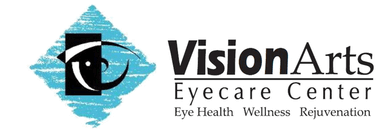Q: Please describe what the ClearPath is used for and give a basic sense of how it works.
 Dr. Vann: The CLEARPATH DS-120 six-second test is a non-invasive tool designed measure the lifetime accumulation of certain proteins in your system that indicated uncontrolled glucose levels over time. Elevated glucose levels are a marker for diabetes. If uncontrolled glucose is detected earlier and brought under control, you can reduce the risk of developing diabetes or worsening an already existing diagnosis. The test consists of a quick six-second scan of the eye without dilation, offers immediate results, and eliminates the need for blood draw.
Dr. Vann: The CLEARPATH DS-120 six-second test is a non-invasive tool designed measure the lifetime accumulation of certain proteins in your system that indicated uncontrolled glucose levels over time. Elevated glucose levels are a marker for diabetes. If uncontrolled glucose is detected earlier and brought under control, you can reduce the risk of developing diabetes or worsening an already existing diagnosis. The test consists of a quick six-second scan of the eye without dilation, offers immediate results, and eliminates the need for blood draw.
Q: How does the Clear Chart identify the onset of diabetes?
Dr. Vann: The crystalline lens absorbs glucose and glucose binds to the crystalline proteins in an irreversible process forming advanced glycation end products (AGEs). When excited with a blue light, the glucose causes a natural and measurable fluorescence effect. Uncontrolled glucose will have far more florescence than normal.
Q: What is the significance of Advanced Glycated End Products (AGEs) and lens flouresence in diagnosing patients with diabetes?
Dr. Vann: AGEs are considered a marker of both the long and short-term exposure to uncontrolled glucose as well as a measure of good glucose management. Once an AGEs baseline has been established, and singe AGE fluorescence cannot be reversed even when a patient is under glucose control, the measure of therapeutic success is through periodic monitoring to see that the fluorescence remains stable over time.
Because the early stages of Diabetes are asymptomatic, many are not diagnosed until the disease has progressed into a stage that is only treatable or controllable with medications and insulin. If detected early, type 2 diabetes can be treated with diet, exercise, and changes in lifestyle.
Q: What are the advantages of using ClearPath in contrast with other methods that are used to identify chronic systemic diseases such as diabetes?
Dr. Vann: The CLEARPATH technology detects elevated glucose levels 7 years prior to the development of any symptoms. There is no fasting or blood test required and the test produces immediate results.
Q: Can you describe the patient experience when using the ClearPath?
Dr. Vann: The patient looks into the CLEARPATH DS-120 by resting his or her chin on a chin rest and resting his or her forehead against the machine. This automatically aligns the patients left eye with the machine properly. The patient will see a red target inside the machine. After the technician had the target perfectly centered, the test will begin. The patient is asked to blink several times and then open his or her eye as wide as possible. A blue light then illuminates and the eye is scanned for six seconds. The results are immediately displayed on the machine’s computer screen and saved as a PDF file for the doctor to access and review with the patient in the exam room.
Q: Do your patients recognize and appreciate the upgrade in technology?
Dr. Vann: We have not yet implemented the machine. We were recently trained on it and will be taking it to a health fair next week. I’ll report back after the health fair.
Q: Are there specific patients for whom the use of ClearPath is particularly helpful or useful? Why?
Dr. Vann: With diabetes being at epidemic levels, this technology is useful for each and every patient. Currently, a blood test is not ordered until a health history uncovers certain risk factors. Because of this, diabetes often remains undetected until it is too late to be controlled by diet, exercise, and lifestyle changes alone. With this technology, each and every patient will have the option to monitor their potential for developing the disease.
Q: Can you share a particular story, in which by using the ClearPath, you were able to provide a patient with a solution or discover a condition which you would not have been able to using previous technology?
Dr. Vann: We have not yet implemented the technology in our practice.
Dr. Vann also makes use of the Volk EyeCheck measurement technology at Visionarts Eyecare Center.
